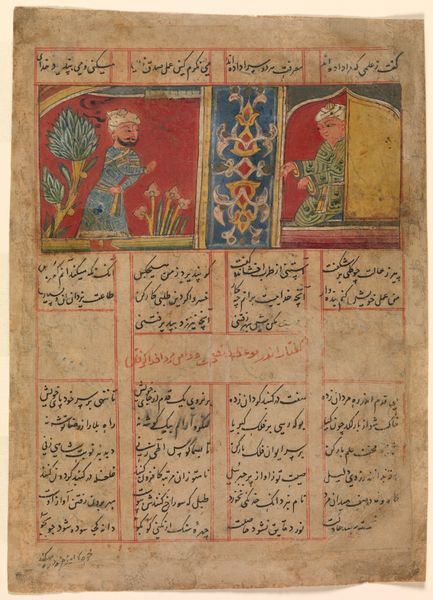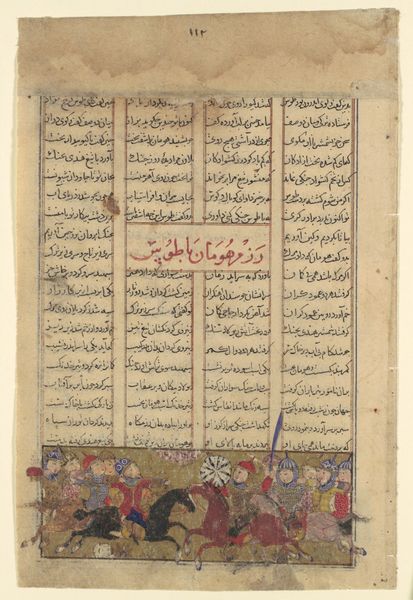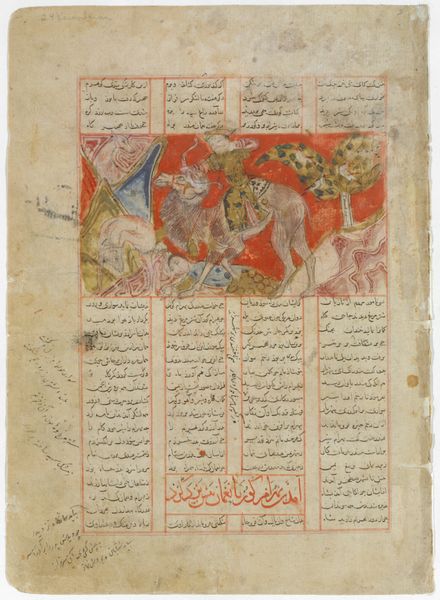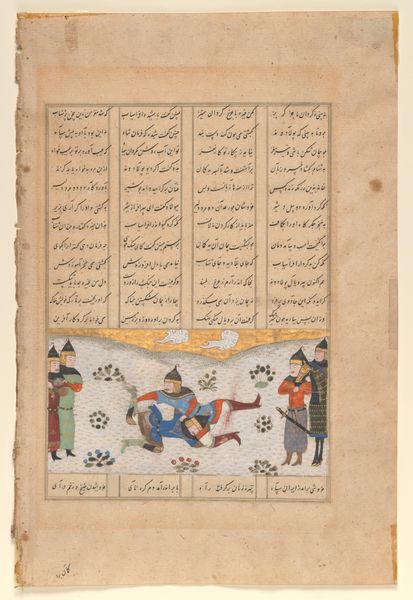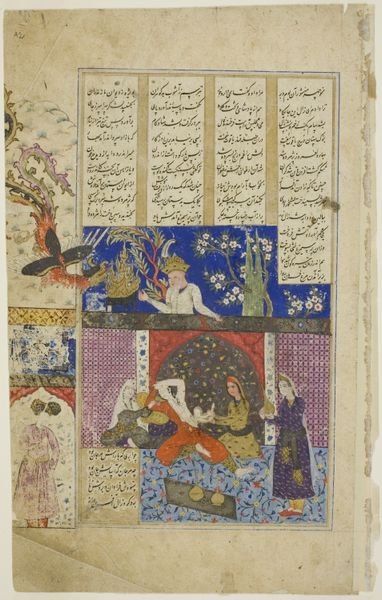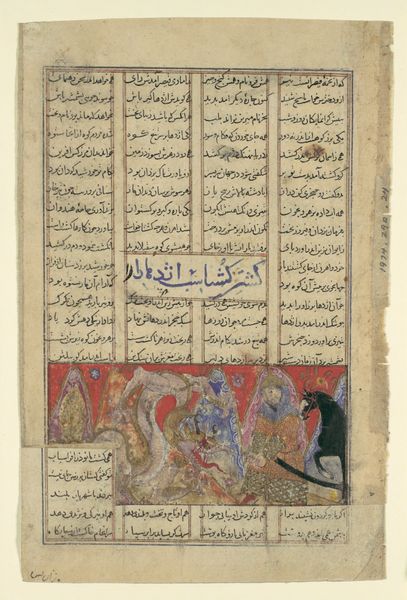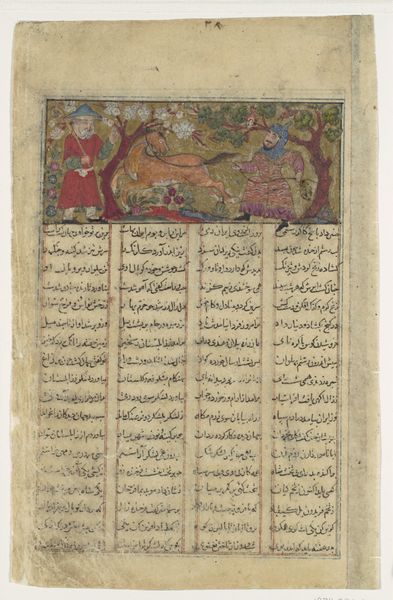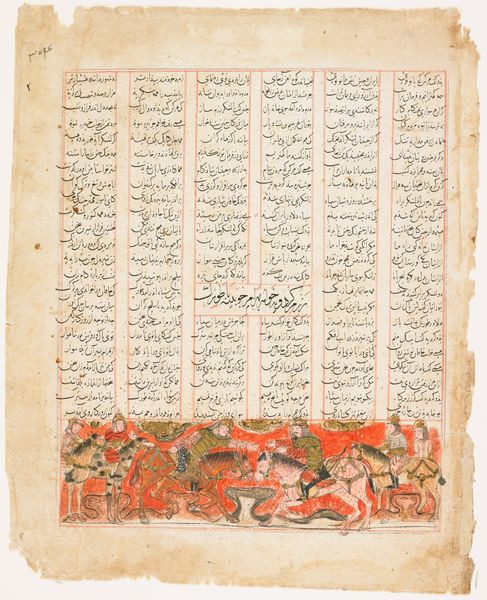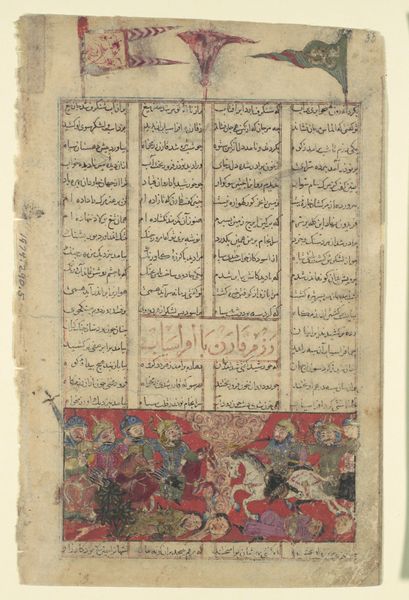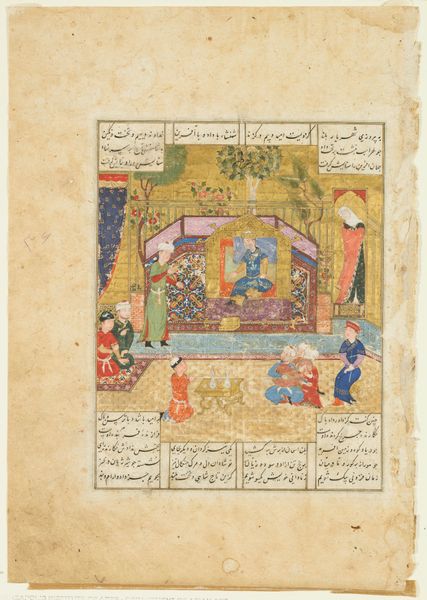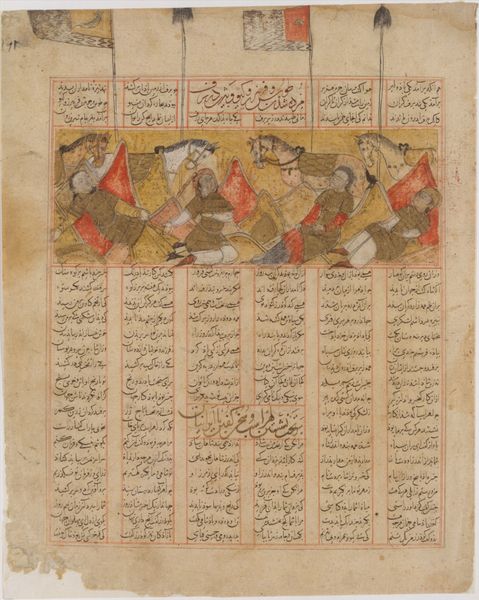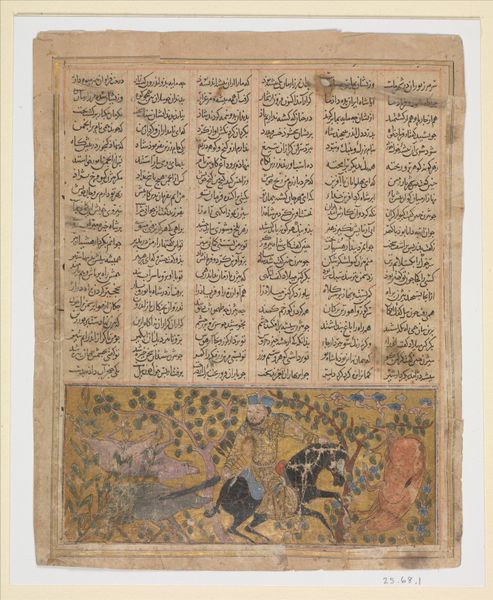
Rustam slaying jackal, from the Shahnama of Firdausi Possibly 1256 - 1353
0:00
0:00
drawing, coloured-pencil, painting, paper, ink
#
drawing
#
coloured-pencil
#
narrative-art
#
painting
#
asian-art
#
paper
#
ink
#
coloured pencil
#
miniature
#
calligraphy
Dimensions: Image: 30 × 25.3 cm (11 13/16 × 9 15/16 in.); Paper: 37.1 × 30.2 cm (14 5/8 × 11 7/8 in.)
Copyright: Public Domain
Editor: This piece is called "Rustam slaying jackal, from the Shahnama of Firdausi," and it's believed to have been created sometime between 1256 and 1353. It’s an ink, colored pencil, and paint drawing on paper. The composition and color palette create this sort of dream-like scene, almost like a fantastical comic book panel. What catches your eye when you look at this artwork? Curator: As a materialist, my first inclination is to examine the production process itself. The materials – ink, colored pencil, paint on paper – speak to a particular kind of artistic labor and a system of patronage where manuscript illustration thrived. This was not mass-produced, but carefully made and highly valued. How do you think the physical act of creating this, with such fine detail, impacts its meaning? Editor: That’s an interesting question. Maybe the precision and time investment suggest the importance of the narrative itself. It's as though the very act of creating it lends weight to the story being told. Curator: Precisely. The paper itself matters. Consider where the materials were sourced. Were they local? Imported? Who had access to them? The social context is interwoven with the materials themselves. Look, too, at the calligraphy framing the scene. Do you read this as a boundary or something more? Editor: I always thought the calligraphy was just ornamentation. Curator: Perhaps, but it’s integral to the narrative, too. It elevates what could simply be craftwork into an artistic statement. And consider the relationship between the text and image. The artist's selection and arrangement weren't arbitrary. It involves material choice and process: the crafting of meaning. Editor: I hadn’t considered that interplay so directly. It seems I need to reconsider how I approach the connection between text and the visual components. Curator: It's about tracing the journey of materials, labor, and meaning within its cultural and social web. Each component informs and shapes the other. Editor: Thanks. I now recognize I need to move beyond the aesthetic beauty. The artistic processes reveal so much.
Comments
No comments
Be the first to comment and join the conversation on the ultimate creative platform.
